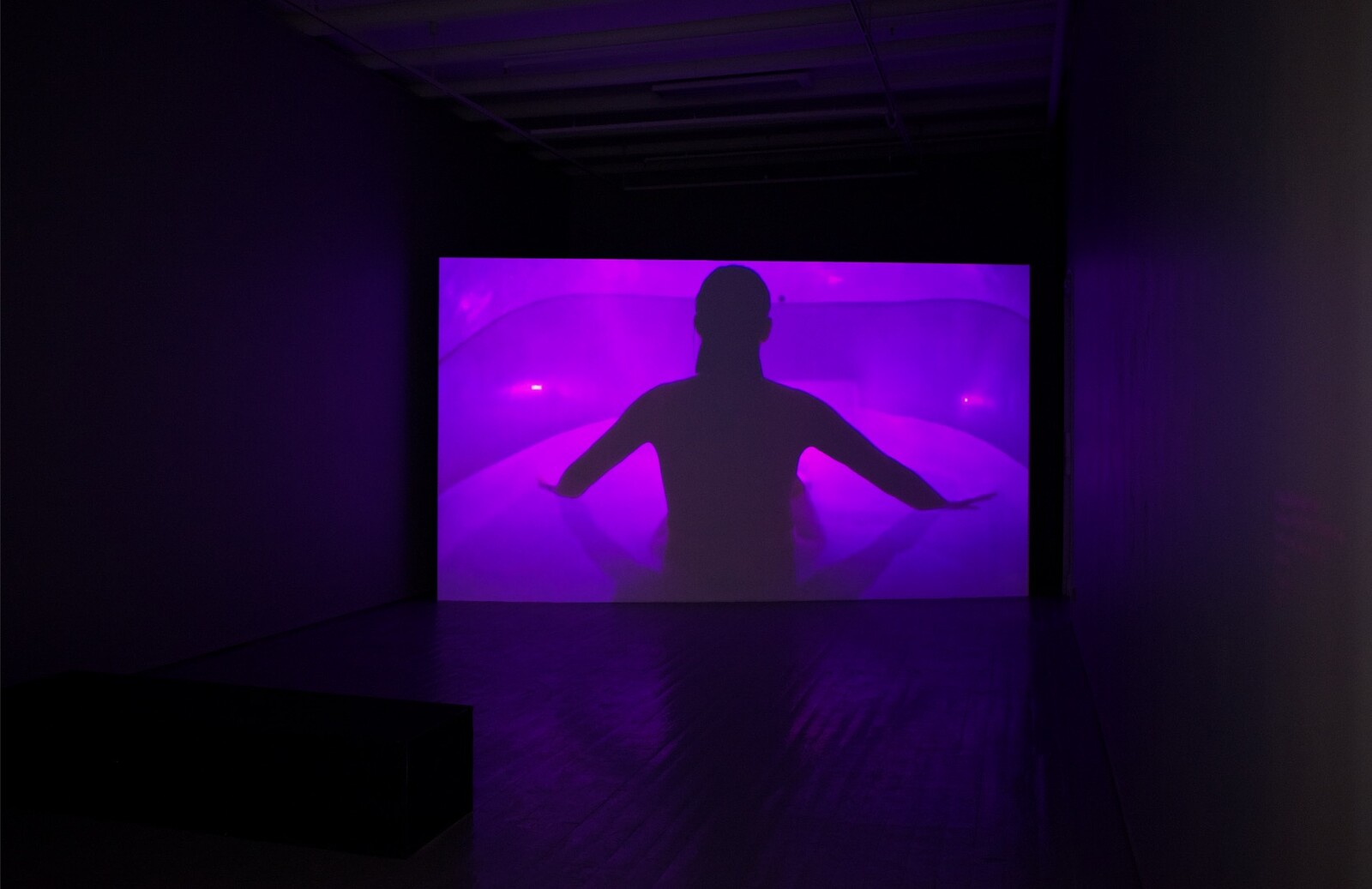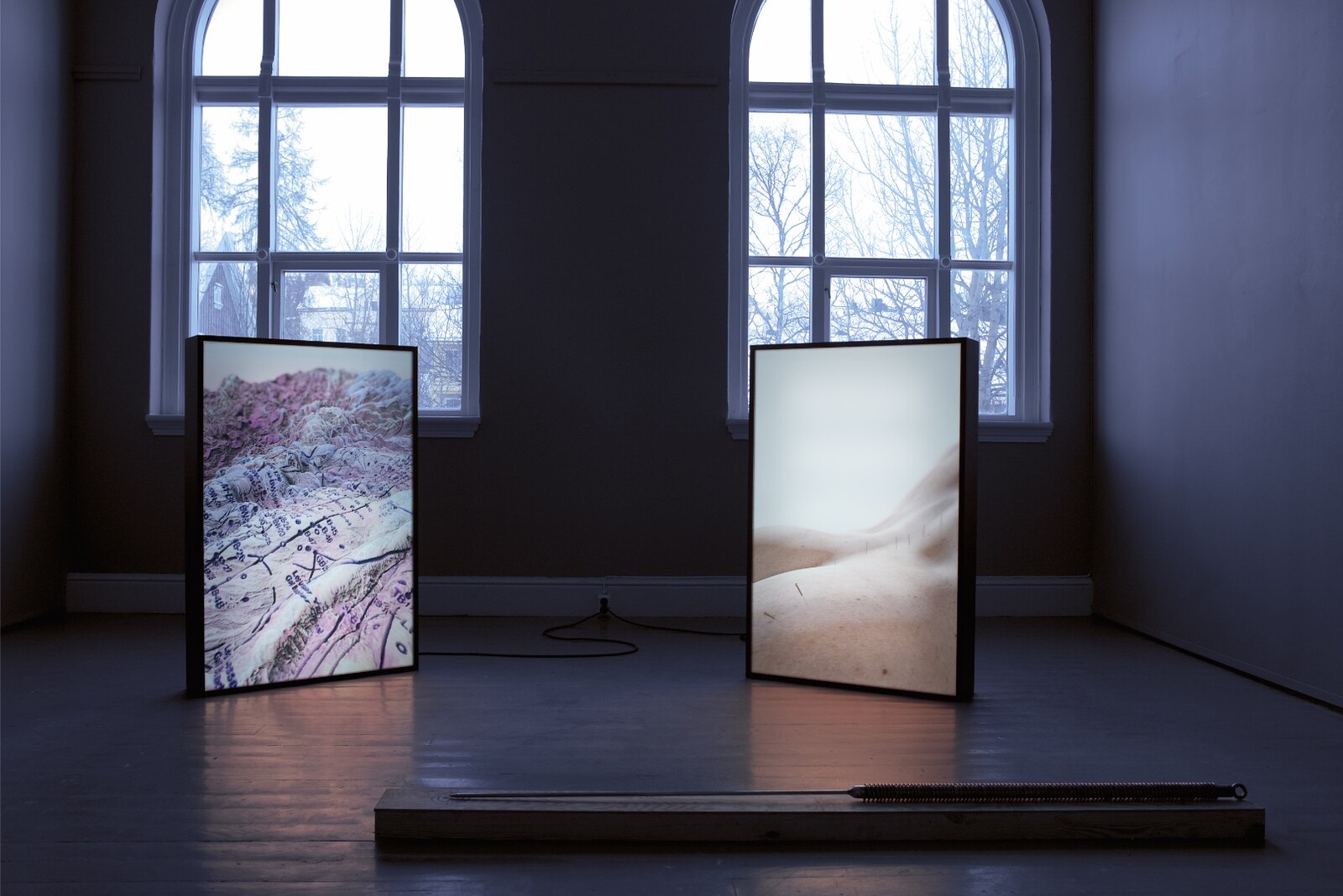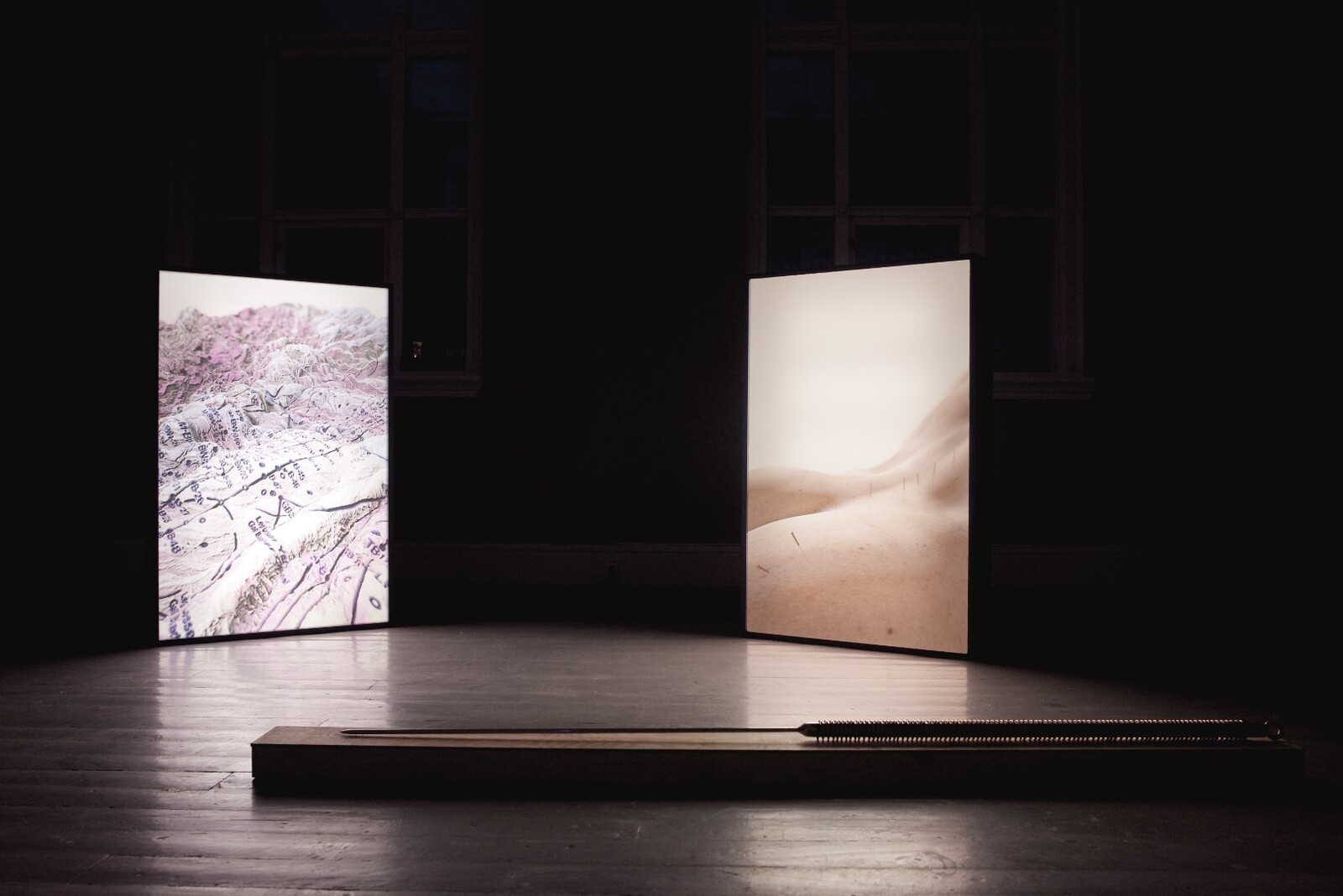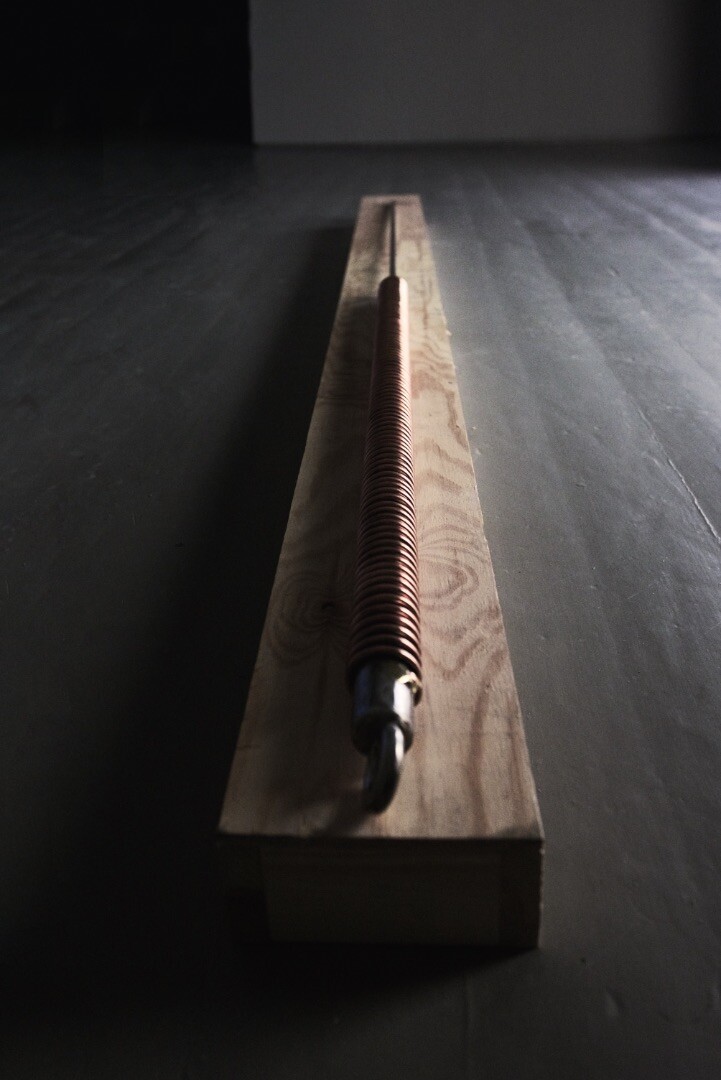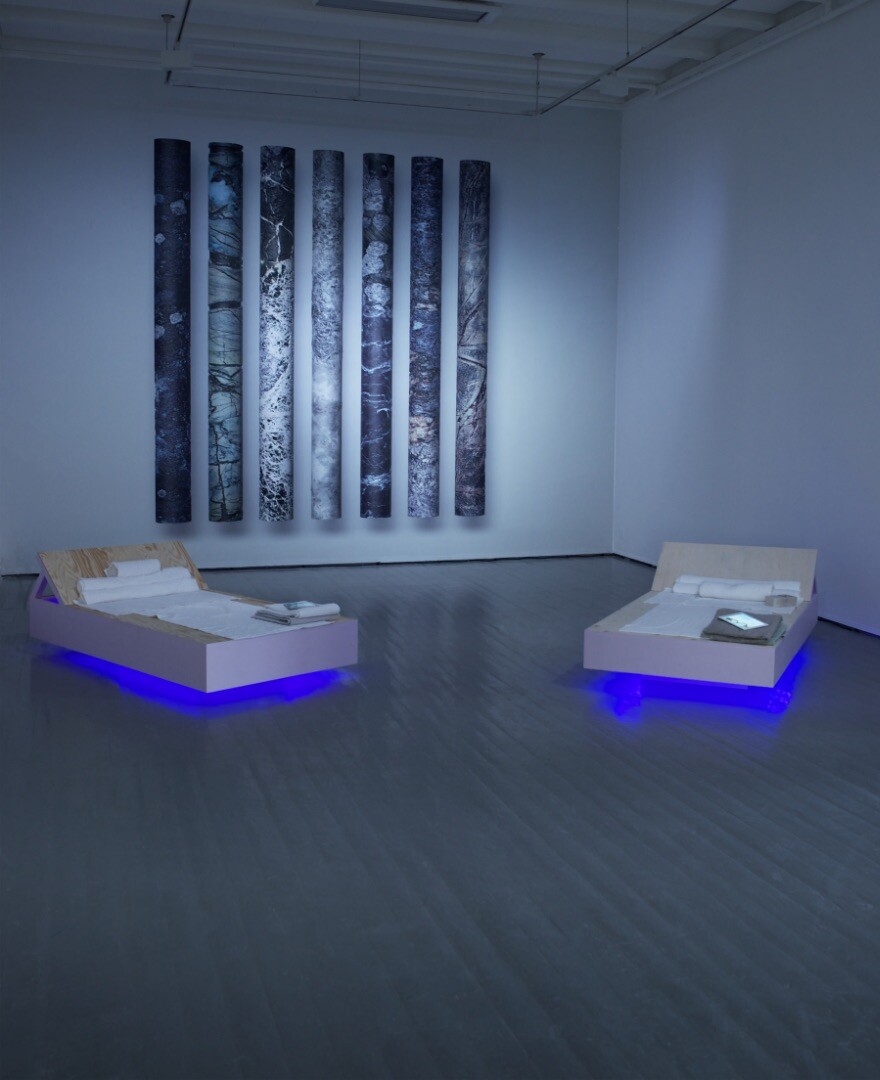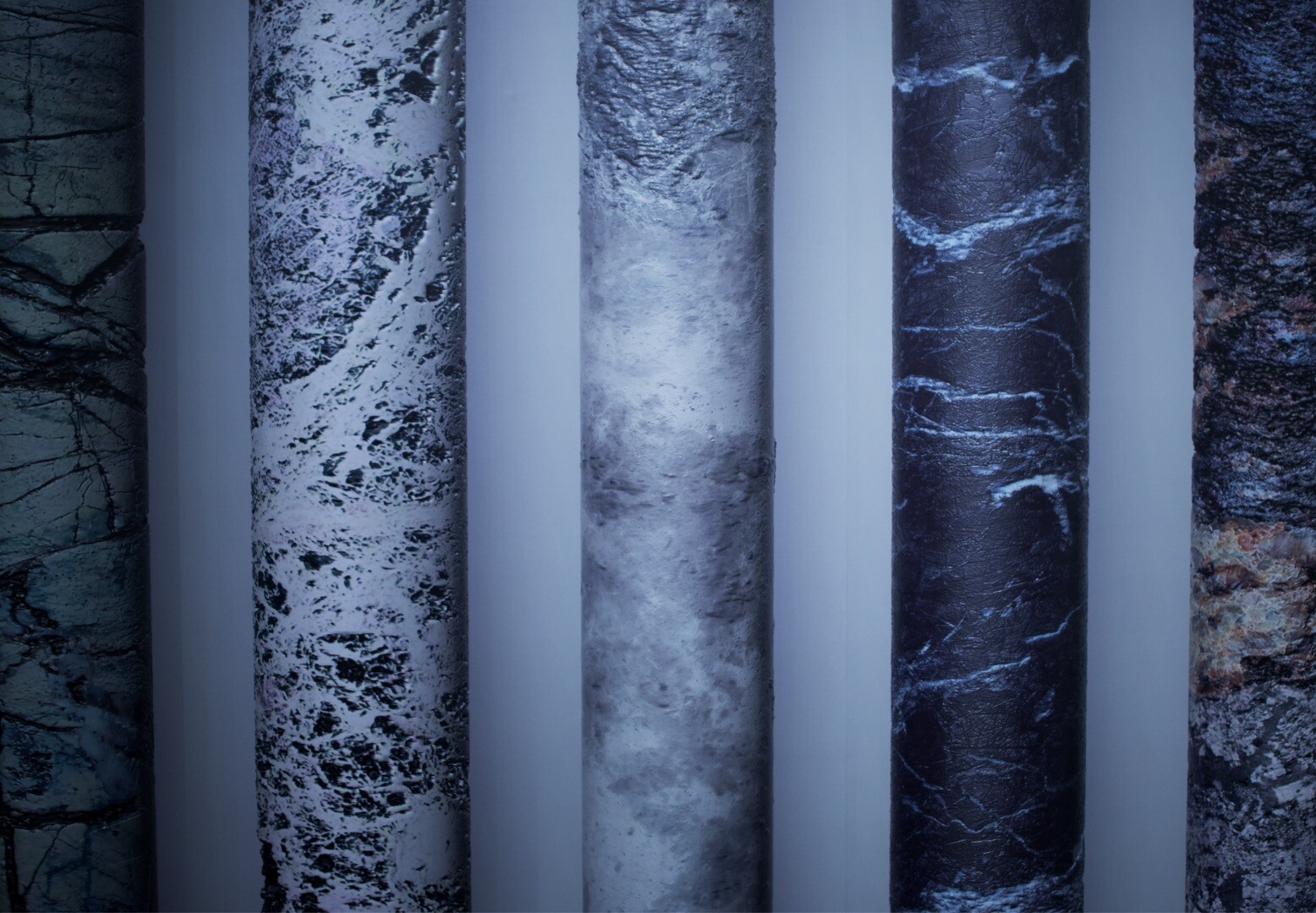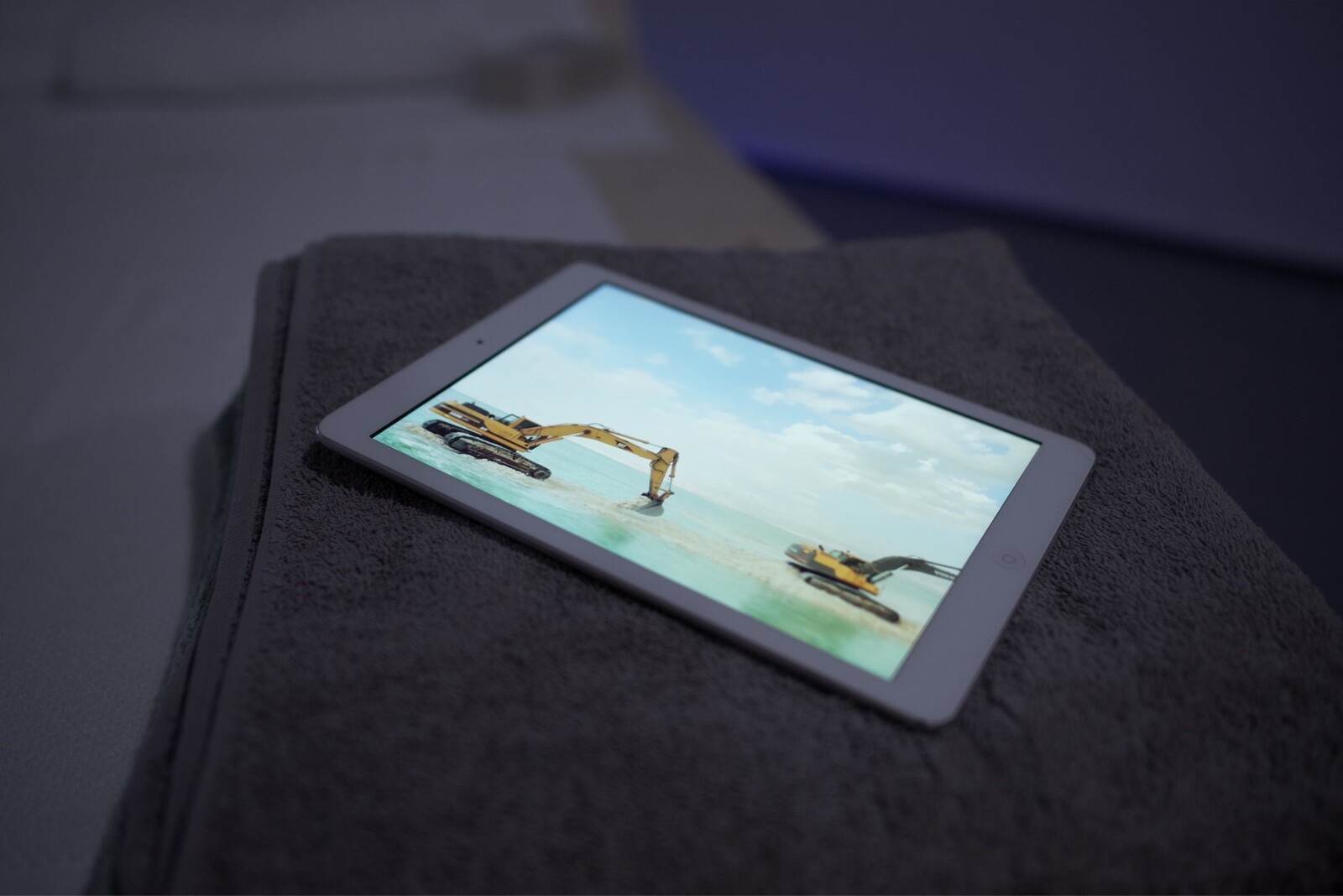Situated at the intersection of science, new materialist philosophy, film, and contemporary art, New Mineral Collective are an artist duo formed in 2012 by Tanya Busse and Emilija Škarnulytė. Their work questions geography, landscape, ecology, and human relations with nature. It comes as no surprise that their exhibition, “Erotics of Counter-Prospecting,” ventures into diverse landscapes of varying geopolitical significance: Svalbard, Kirkenes, Las Vegas, the Dead Sea. At times, landscapes of snow, ice, earth, and mountains resemble skin, able to give and receive touch and warmth. The works open a space for a sensual connection with nature. As I move through the gallery, Susan Sontag’s famous words in Against Interpretation (1964) keep coming back to me: “In place of a hermeneutics we need an erotics of art.”1
The exhibition opens with Hollow Earth, a widely shown and reviewed film from 2013. It shows poetic images of snowscapes and mines at Svalbard, an archipelago in the Arctic Ocean off the northern coast of Norway, where coal mining was once the core activity but is almost abolished today. New to this exhibition is the transfer of Hollow Earth from HD video to 16mm film. The sound of the projector and the grainy images lend a rough materiality to the experience, in dynamic contrast to the rest of the exhibition, which has a cleaner, more polished finish.
Shown in a dark room on the first floor, Hollow Earth holds a special role in the exhibition—a place in which I can reconsider my expectations of landscapes as nature. The boundary between me as human, and nature as other, dissolves. Being in Svalbard—or Tromsø for that matter—one becomes aware of how vulnerable this circumpolar geography is to climate change and industrial extraction of its natural resources. In the Anthropocene, this invitation to connect with nature in a deeper, more sensitive way feels particularly urgent.
The first room on the second floor resembles a spa. I sit on wooden beds covered with white towels, with a blue, tanning-bed light streaming from underneath, and watch a video on an iPad. The work’s full title is Proposal I: Your Body Is a Mine, Location 31°30’’N 35°30’’E Geotherapy: Peloidotherapy (2019); it shows sunny images from the Dead Sea, known for the healing properties of its mud (peloidotherapy means mud treatment), where two yellow excavators dig up what appears to be salt.
Across the gallery is Pressure Point Acupuncture (2019), a work consisting of two transparent vinyl prints in wooden light boxes and a pair of oversized acupuncture needles roughly five feet long. It proposes similarities between the human body and landscape: on the right-hand light box is the close-up photo of a person’s naked lower back with acupuncture needles in it; the left shows a contour map of a landscape with drawings of what appear to be acupuncture points on it. Together, they imply that the earth is a body that can be treated and healed.
Sublime, mountainous landscapes have long been a familiar trope of Norwegian art, particularly among nineteenth-century painters such as Johan Christian Dahl, August Cappelen, and Hans Gude. “Erotics of Counter-Prospecting” questions such culturally constructed ideals of “nature” in playful and sensual ways. Using few means—a tint of blue light here, a pink hue there, the white towels, a wall-mounted image of seven cylindrical pillars of stone resembling core samples (Seven Future Prospects, 2019)—the gallery is transformed: my body relaxes, yet I become more alert to the works and the landscapes they represent.
New Mineral Collective describe themselves as a platform that could potentially expand, adding members and working across other forms and mediums. They use the term “counter-prospecting,” coined by architect Kjerstin Uhre, to describe their method, which stands in opposition to geological analysis and extraction. If analysis is at the heart of hermeneutics, its opposition could be understood as an “erotics”: a tool to reframe and resist capitalist exploitation of nature. By connecting ideas of trauma and healing to geographical areas that have “suffered” from extraction, the exhibition succeeds in offering fresh ways to rethink human relationships with nature, and exchange an analytical—and disinterested—perspective with a more sensory, entangled, and ultimately healing relationship.
Susan Sontag, Against interpretation, and other essays (New York: Farrar, Straus & Giroux, 1966), 10.

